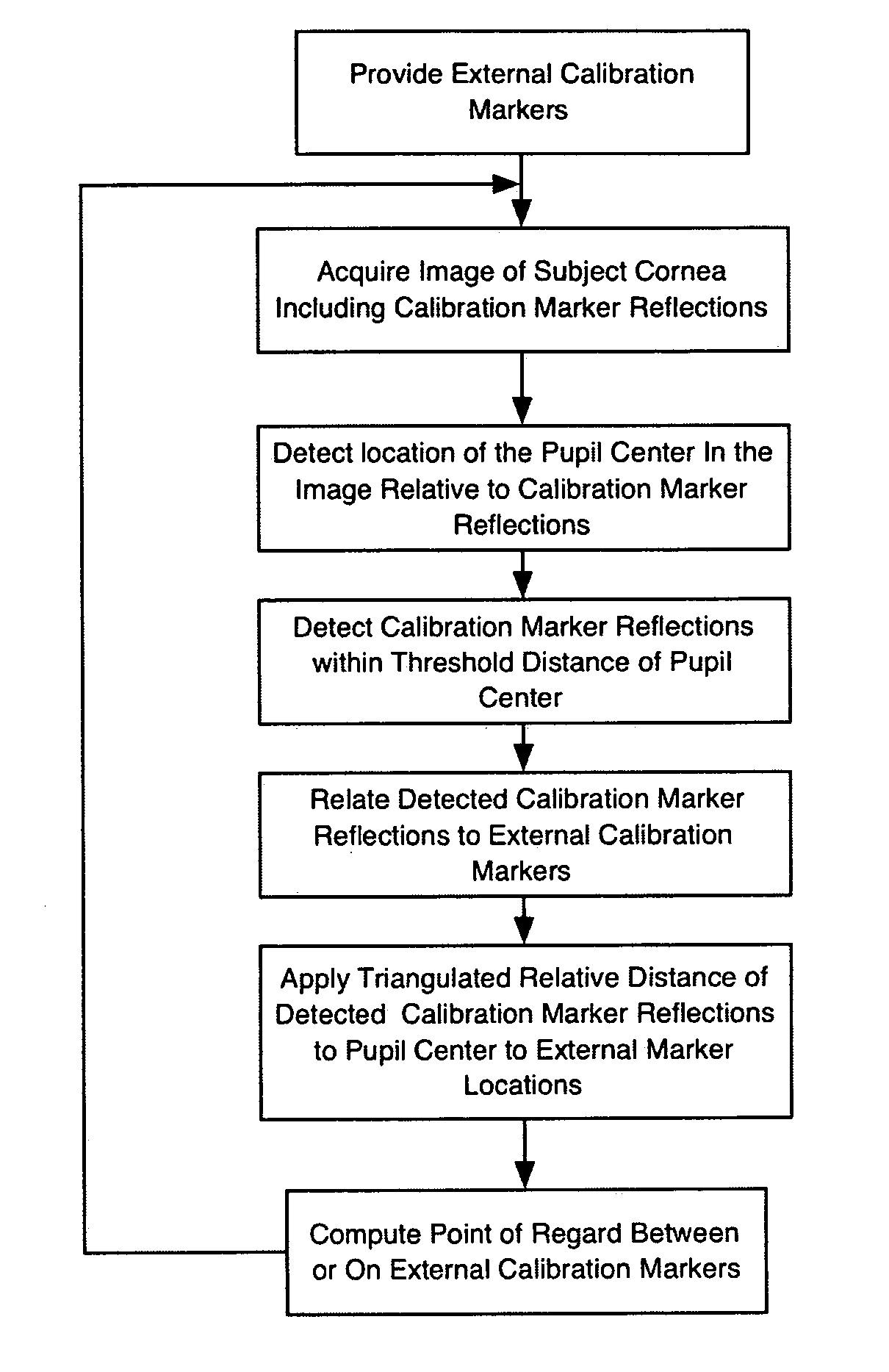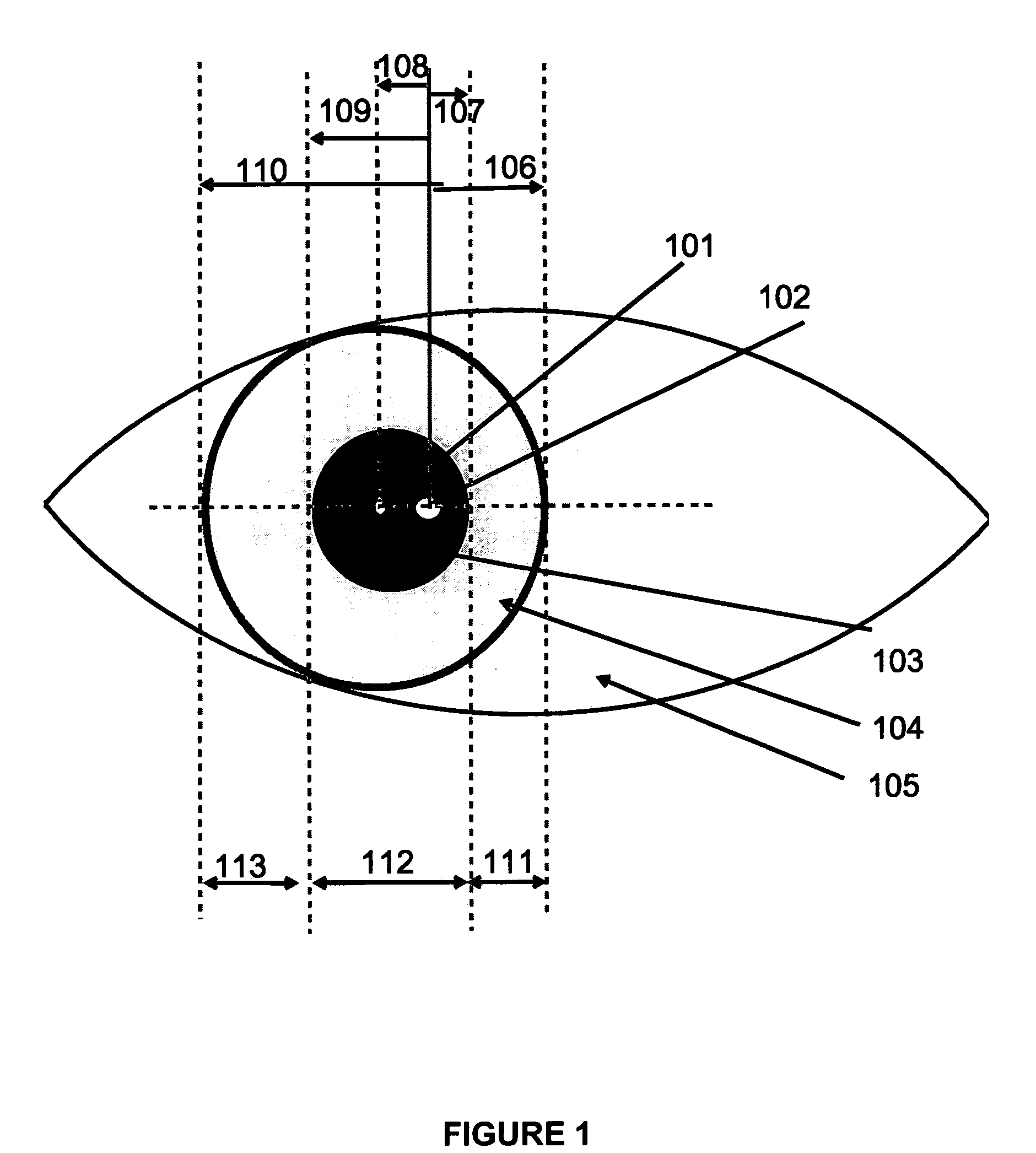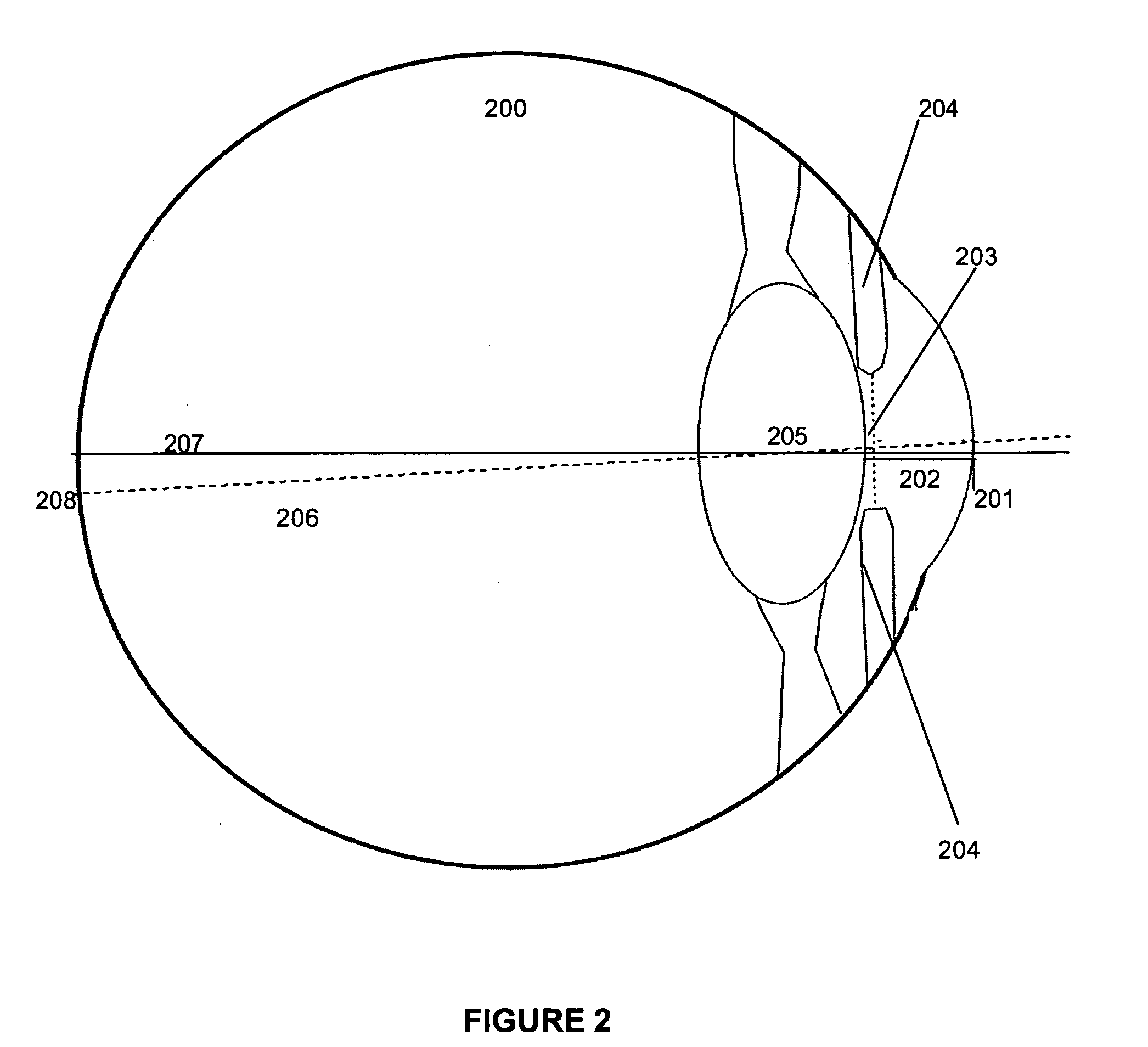Method and apparatus for calibration-free eye tracking using multiple glints or surface reflections
a technology of surface reflection and eye gaze, applied in the field of eye gaze tracking, can solve the problems of limiting the head movement of current eye trackers, not suitable for public places such as shopping malls or museums, and not being suitable for mass market products, so as to increase the duration of point of gaz
- Summary
- Abstract
- Description
- Claims
- Application Information
AI Technical Summary
Benefits of technology
Problems solved by technology
Method used
Image
Examples
example 1
Applications to Shopping Window Displays
[0099] By augmenting any shopping display, such as, for example, computer or television screen-based, projected, static surface, objects, goods (e.g., clothing, furniture), with the invention described herein, eye gaze behavior of subjects (i.e., shoppers) can be tracked for the purpose of registering whether individuals are interested in the goods on display. This can be used for evaluating the design or arrangement of advertisements or arrangements of goods, or for disclosing more information about products or objects to the subject. The following scenario illustrates this application. A clothes rack is augmented with one or more eye tracking cameras, and the clothes or hangers (or any other goods) are augmented with illuminators that have pulse-code modulated ID tags emitted with the light. Cameras detect which item the shopper is interested in by tracking the eye gaze of the shopper, preferably using the methods described herein. When the...
example 2
Progressive Disclosure and Turn-Taking Appliances
[0100] Any interactive or non-interactive home appliance can be augmented with the invention, or any other method of eye tracking, and / or with face tracking and / or proximity / body orientation sensing, to determine the availability of users for communications with other people or devices. Subjects may direct the target of speech commands to the appliance, or initiate speech dialogue or other forms of disclosure by the appliance through establishing eye gaze fixation (i.e., looking behaviour) with the appliance. Progressive disclosure of information by the appliance may broaden or otherwise alter the scope of information provided by that appliance, particularly useful for, but not limited to, ambient information appliances (such as an ambient colored light fixture projecting information to the user at low resolution, for example with a particular color that indicates outside temperature, as in the Ambient Orb (Ambient Devices, Inc., 200...
example 3
Gaming Applications
[0102] Incorporation of the invention, or any other form of eye, face or body tracking technology into a gaming device, portable or otherwise, may provide extra channels of interaction for determining interest in embodied gaming characters. Characters or objects in games can then observe whether they are being looked at by the user and adjust their behavior accordingly, for example by avoiding being seen or by attracting user attention. Alternatively, characters or objects can respond verbally or nonverbally to fixations by the user, engaging the user in verbal, nonverbal, textual, graphical, or other forms of discourse. In the case of speech recognition agents or online human interlocutors, the discourse can be mutual, and the progressive disclosure technique described in Example 2 can be used to structure this discourse. Alternatively, the technology can be used to allow gaming applications to make use of eye gaze information for any control purpose, such as mo...
PUM
 Login to View More
Login to View More Abstract
Description
Claims
Application Information
 Login to View More
Login to View More - R&D
- Intellectual Property
- Life Sciences
- Materials
- Tech Scout
- Unparalleled Data Quality
- Higher Quality Content
- 60% Fewer Hallucinations
Browse by: Latest US Patents, China's latest patents, Technical Efficacy Thesaurus, Application Domain, Technology Topic, Popular Technical Reports.
© 2025 PatSnap. All rights reserved.Legal|Privacy policy|Modern Slavery Act Transparency Statement|Sitemap|About US| Contact US: help@patsnap.com



